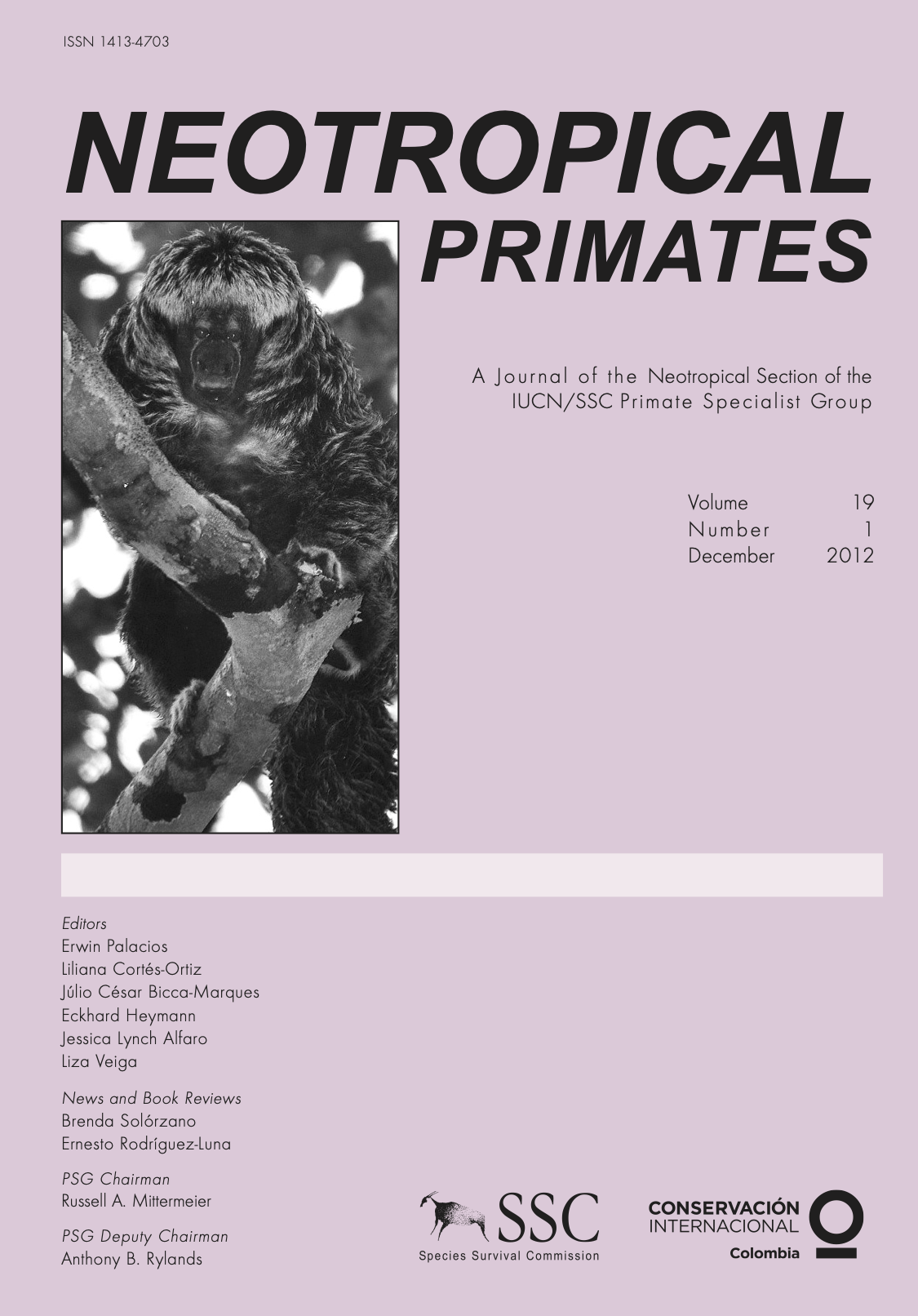Primates of the Lower Urubamba Region, Peru, with comments on other mammals
DOI:
https://doi.org/10.1896/044.019.0103Keywords:
Lower Urubamba, Peru, primate densitiesAbstract
We present data on encounter rates and group sizes of primates in the Lower Urubamba Region of Peru, an unprotected area little represented in the literature. We censused a total of 467.7km on 10 transects during two seasons and documented nine primate species in the area. Compared to nearby protected areas, group encounter rates were lower and group sizes were smaller for all species except Saguinus fuscicollis and S. imperator. Relatively high abundance of S. imperator and low abundance of larger bodied primates is a possible example of density compensation resulting from hunting pressure. In addition to the primates, 23 other mammal species were observed or photographed by camera traps, including Procyon cancrivorus, which was not previously reported in the area.

Downloads
Published
Issue
Section
License

This work is licensed under a Creative Commons Attribution-NonCommercial-ShareAlike 4.0 International License.


